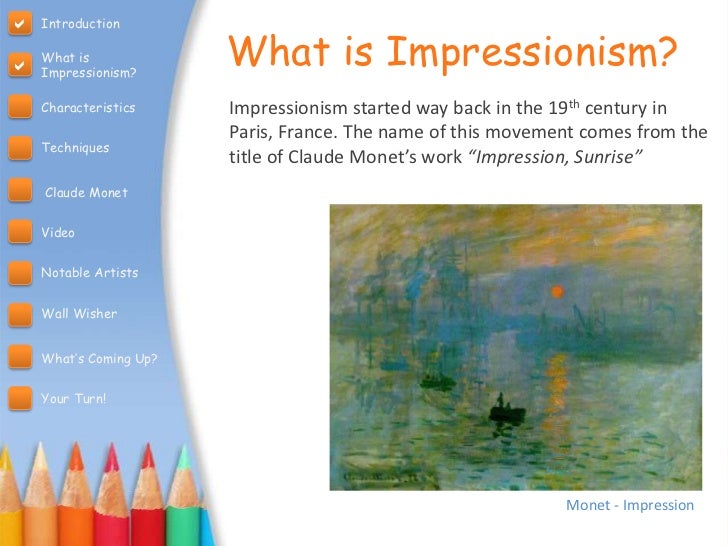
Impressionistic passages are common in earlier music by Frédéric Chopin, Franz Liszt, and Richard Wagner, and in music by later composers such as Charles Ives, Béla Bartók, and George Gershwin. The other composer most often associated with Impressionism is Maurice Ravel. Impressionism can be seen as a reaction against the rhetoric of Romanticism, disrupting the forward motion of standard harmonic progressions. Elements often termed impressionistic include static harmony, emphasis on instrumental timbres that creates a shimmering interplay of “colours,” melodies that lack directed motion, surface ornamentation that obscures or substitutes for melody, and an avoidance of traditional musical form. The term, which is somewhat vague in reference to music, was introduced by analogy with contemporaneous French painting it was disliked by Debussy himself.

Impressionism, in music, a style initiated by French composer Claude Debussy at the end of the 19th century. SpaceNext50 Britannica presents SpaceNext50, From the race to the Moon to space stewardship, we explore a wide range of subjects that feed our curiosity about space!.Learn about the major environmental problems facing our planet and what can be done about them! Saving Earth Britannica Presents Earth’s To-Do List for the 21st Century.Britannica Beyond We’ve created a new place where questions are at the center of learning.100 Women Britannica celebrates the centennial of the Nineteenth Amendment, highlighting suffragists and history-making politicians.COVID-19 Portal While this global health crisis continues to evolve, it can be useful to look to past pandemics to better understand how to respond today.Student Portal Britannica is the ultimate student resource for key school subjects like history, government, literature, and more.


Britannica Classics Check out these retro videos from Encyclopedia Britannica’s archives.Britannica Explains In these videos, Britannica explains a variety of topics and answers frequently asked questions.


 0 kommentar(er)
0 kommentar(er)
